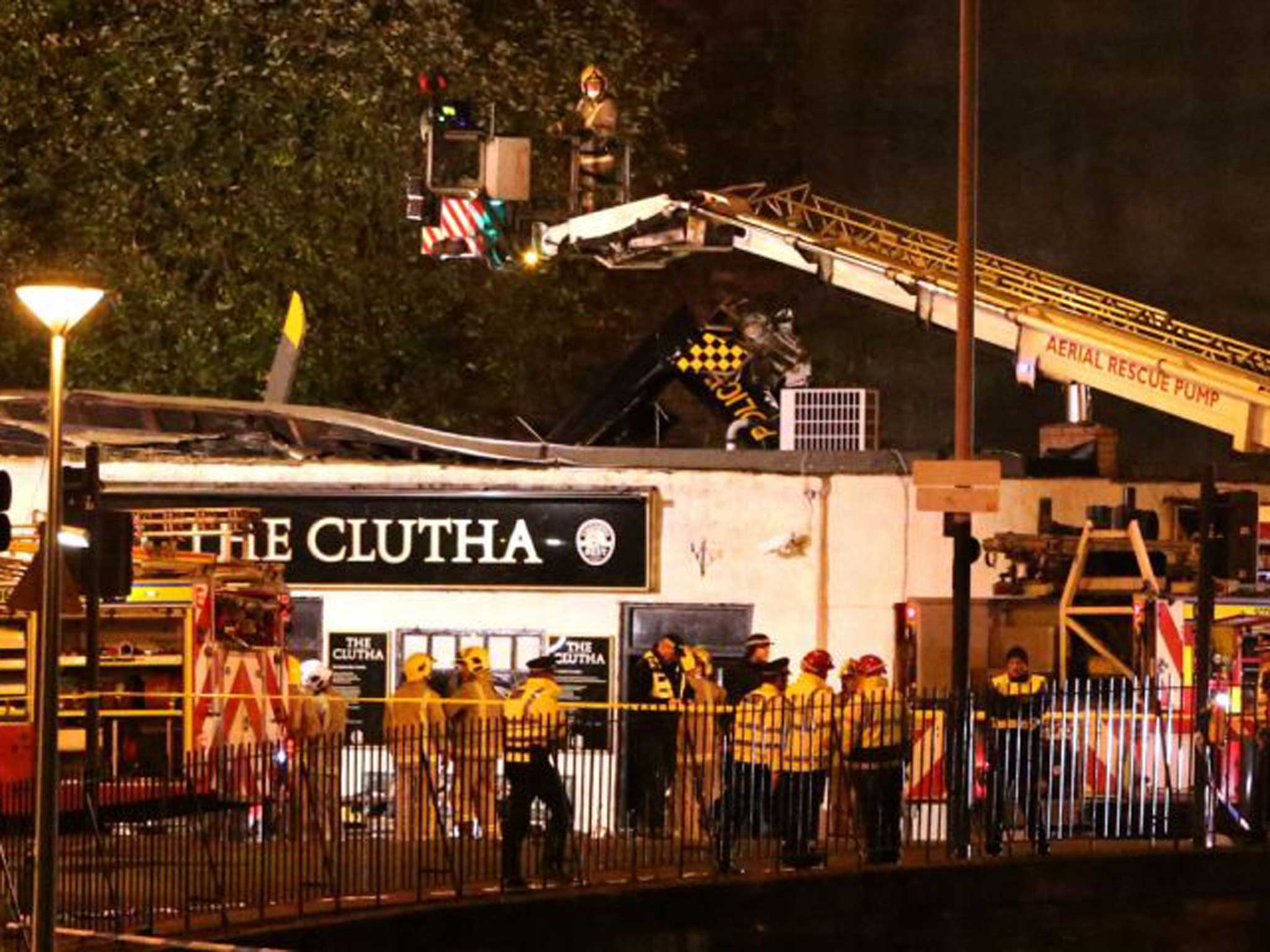Clutha helicopter crash pilot did not follow emergency protocol, report finds
10 people died in the crash on Clutha pub on 29 November

The pilot of the helicopter that crashed into a Glasgow pub in 2013 killing 10 people did not follow standard emergency procedures, a new report has found.
In the moments preceding the crash the fuel transfer pumps had been turned off for “unknown reasons,” the Air Accidents Investigation Branch (AAIB) report claimed on Friday.
Three people in the helicopter and seven people inside Clutha Vaults Bar died when the aircraft crashed into the top floor on 29 November.
The report also found no reason why a better controlled landing was not attempted by the pilot and recommended all helicopters should be fitted with a flight recorder, similar to aeroplanes’ black boxes.
In the aftermath of the AAIB report, Scotland’s Crown Office has confirmed a fatal accident inquiry into the crash will be initiated as soon as possible.
Families of those killed in the incident have expressed their anger, claiming they were “bombarded by data and graphs and numbers” for hours on Wednesday – ahead of the public release of the report – without clearer explanation.
John McGarrigle, who lost his father John in the crash, said he was “furious” over the time the investigation had taken and said he was concerned they would never know why the fuel transfer tanks were switched off.
Scotland’s First Minister Nicola Sturgeon also called the report “deeply disappointing”. She added the report appears "to raise more questions than it answers".
The helicopter’s right and left engines both “flamed out” when the supply tanks were emptied, the report details, causing the aircraft to crash into the roof of the Clutha bar.
Despite this, the report found 76kg fuel was recovered still in the main tank, and that both fuel transfer pumps had been “selected off for a sustained period before the accident, leaving the fuel in the main tank, unusable.”
Warning captions had been “triggered and acknowledged” but “the flight continues beyond the 10-minute period” specified by the Pilot’s Checklist Emergency and Malfunction Procedures.
The report claims “despite extensive analysis of the limited evidence available” it was unable to determine why the pumps were turned off and why the pilot did not land within the 10-minute period.
Additional reporting by Press Association.
Join our commenting forum
Join thought-provoking conversations, follow other Independent readers and see their replies
Comments